
Memes (Sam Was Here)
2019
Watercolor and acrylic on paper
metadata: posted June 21st, 2019. 56 likes
15 x 15 inches

The Sacklers (Family Tree)
2019
watercolor, ink, The New York Times, and the Internet on paper mounted on dibond
53 x 40 inches

Textron (Indirect Investments)
2019
watercolor, ink, and the Internet on paper mounted on dibond
33 x 53 inches

Collectors (Halloween)
2019
Watercolor and acrylic on paper
metadata: posted April 20th, 2019. 144 likes
15 x 15 inches
Through specific subjects and case studies, Powhida uses an aesthetic of what might be best described as ‘capitalist realism’ to render an image of neoliberal governance and art’s instrumentalization in perpetuating a system of private-public partnerships. Punctuating these slow takes are a series of paintings based on the artist’s Instagram memes drawn from films and series including Halloween, Don’t Look Now, The Terminator, Robocop, Chernobyl, and Billions, which offer a different kind and degree of reflection on art’s role in society.
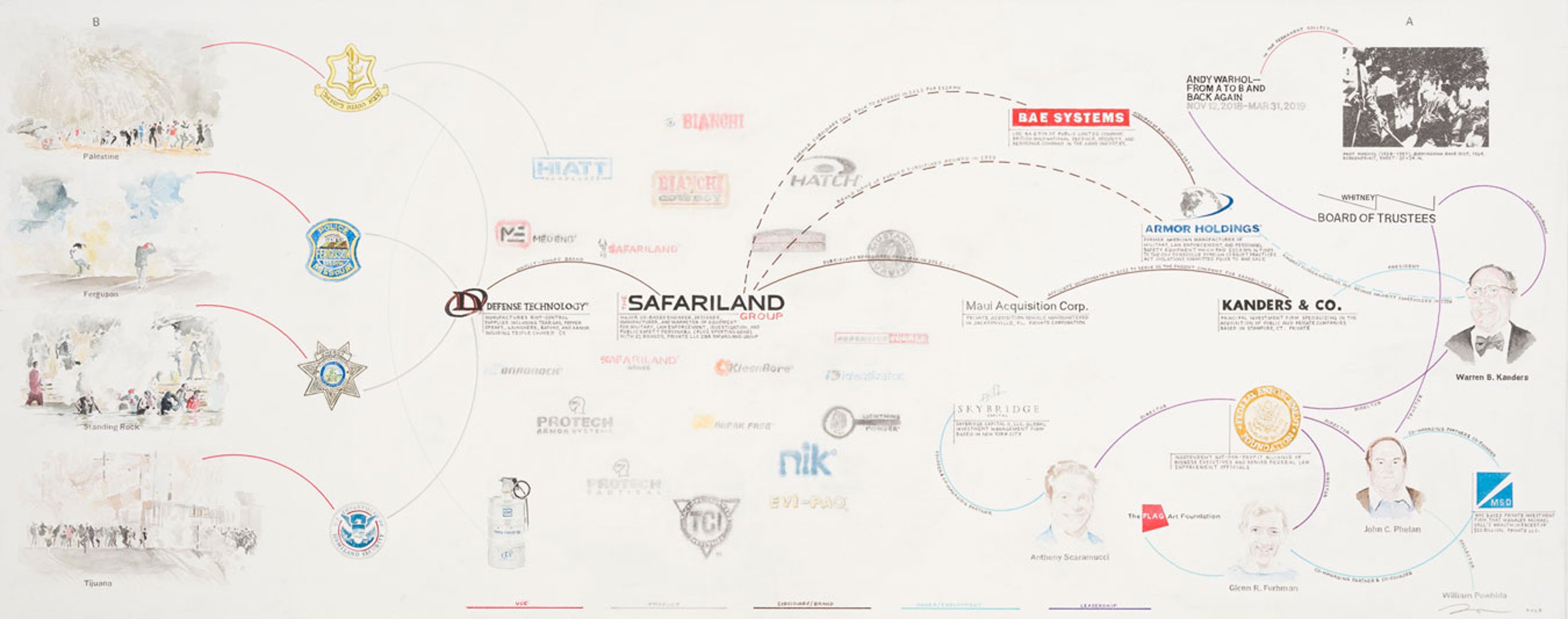
Safariland (Direct Investment)
2019
watercolor, ink, transfer, and the Internet on paper mounted on dibond
21.5 x 54 inches

Political Artist (Mary Magdalene)
2019
Watercolor and acrylic on paper
metadata: posted April 21st, 2019. 244 likes
15 x 15 inches

Hudson Yards (Phase I)
2019
watercolor, graphite, colored pencil, PVA glue, ink, the Internet and The Cost of the Hudson Yards Redevelopment
Project by Bridget Fisher and Flávia Leite on paper mounted on panel.
58 x 78 inches

Alex Poots (Billions)
2019
Watercolor and acrylic on paper
metadata: posted June 7th, 2019. 128 likes
15 x 15 inches
The private and public systems that William Powhida maps out involve a lot of powerful white people. The artist visualizes financial investments in a military and defense conglomerate by four Whitney board members; the corporate web of profit, violations, lobbying, and philanthropy of the Koch Brothers’ sprawling empire; the policies and investments behind developer Stephen A. Ross’s Hudson Yard’s project initiated by former mayor Michael Bloomberg; laws and executive orders behind privatization since President Reagan; the direct flow of businessman Warren B. Kanders’ tear gas to his previous role as a trustee at the Whitney Museum; and the curatorial structure of the Venice Biennale.

Art World Insider (Robocop)
2019
Watercolor and acrylic on paper
metadata: posted July 18th, 2019. 147 likes
15 x 15 inches

Koch Industries (Private Company)
2019
watercolor, ink, Rolling Stone, and the Internet on paper mounted on dibond
38 x 54 inches
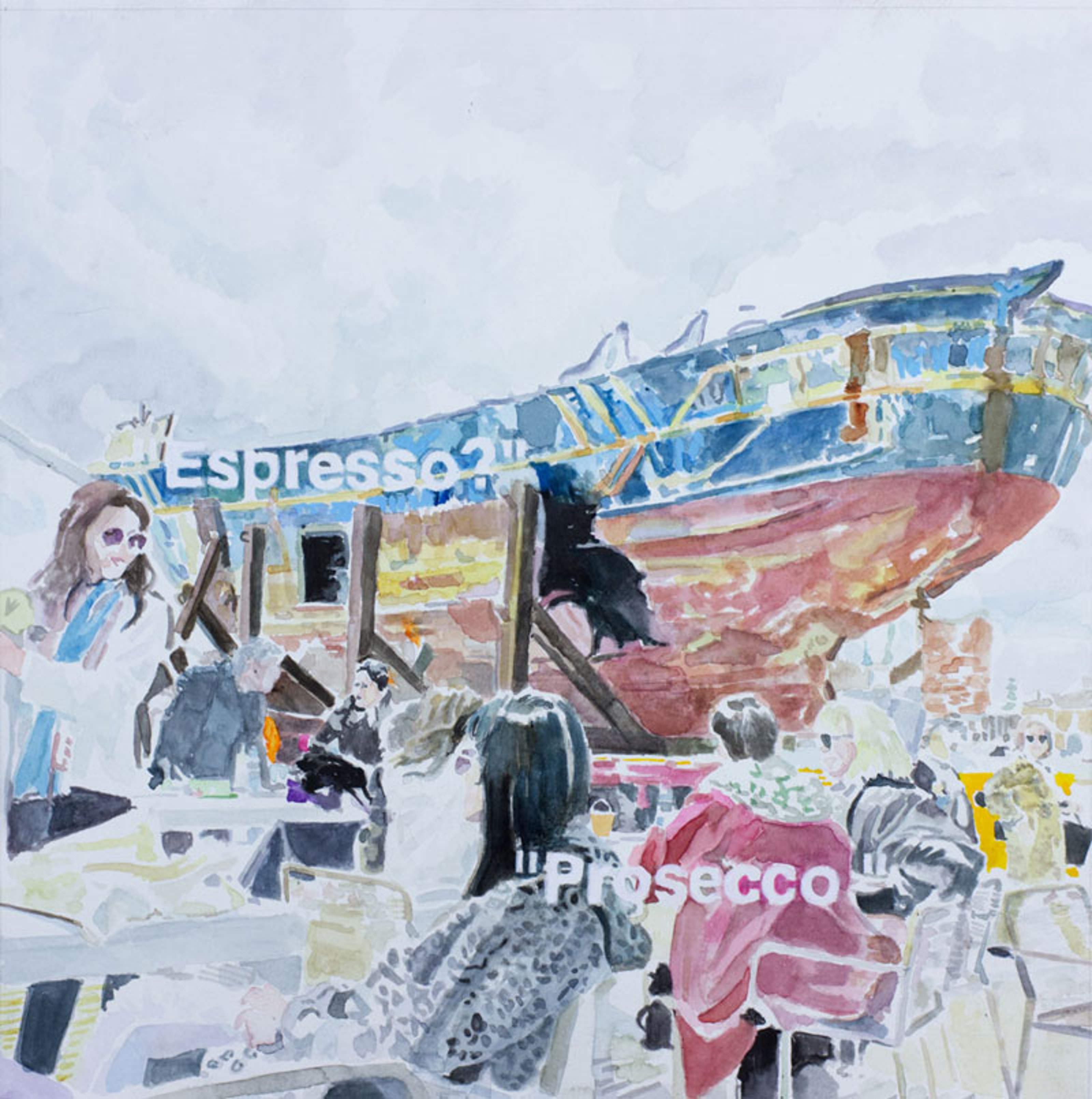
Barca Nostra (Venice Biennale)
2019
Watercolor and acrylic on paper
metadata: posted May 12th, 2019. 129 likes
15 x 15 inches
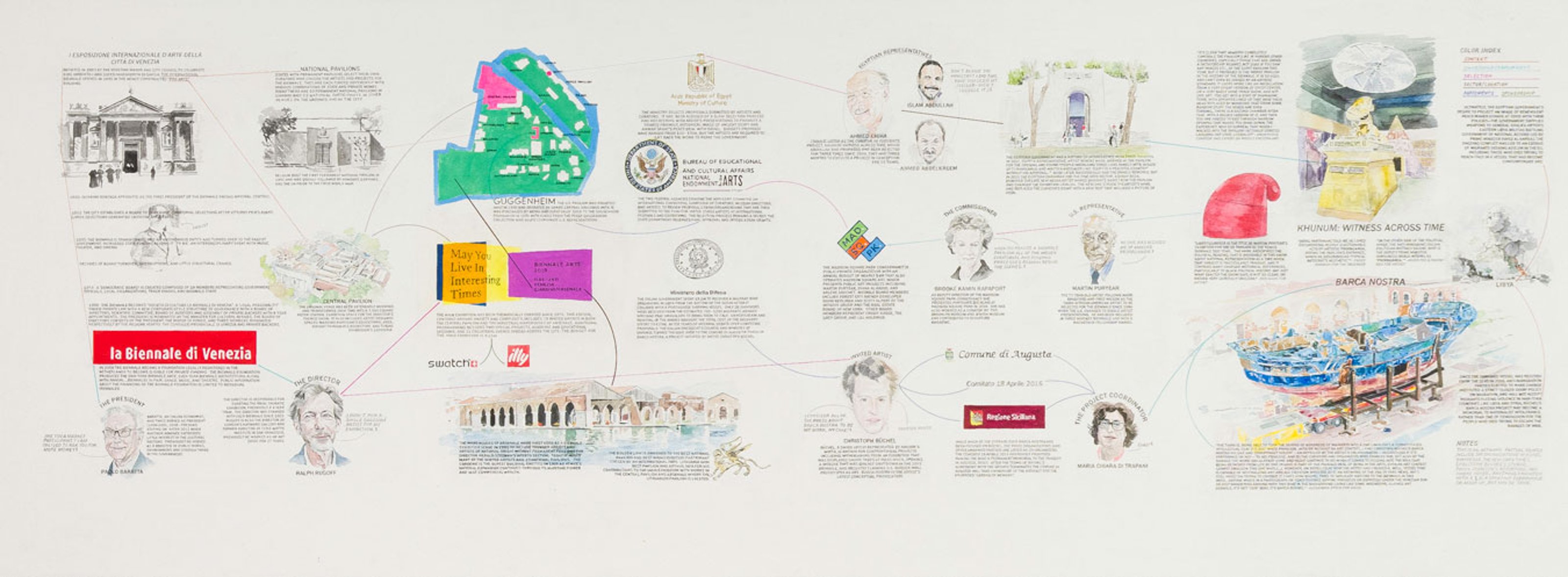
La Biennale di Venezia (Propaganda)
2019
Watercolor, gouache, transfer, and the Internet on paper
27 x 74 inches
Image courtesy of the gallery and the Nasher Museum. Special thanks to Paddy Johnson for her collaboration on the piece.

Crushing Anxiety (Chernobyl)
2019
Watercolor and acrylic on paper
metadata: posted May 28th, 2019. 333 likes
15 x 15 inches
Through a companion series of Instagram memes largely drawn from science fiction and horror, the artist comments on the institution of critique — “political art is a joke” — but as Kanders’ resignation from the Whitney Board shows, there are, in fact, ways to engage institutional critique outside of the studio. As the Teargas Biennial essay, the Decolonize this Place protests, and the withdrawal of 9 artists from the Whitney Biennial demonstrate, internal and external pressure can compel institutions to change. Nan Goldin’s efforts and lawsuits, brought by five states, representing thousands of victims, have caused museums to sever ties with the Sacklers and ask existential questions about their relationship with structural inequality.

Neoliberalism (Policy)
2019
watercolor, ink, The U.S. Government, and the Internet on paper mounted on dibond
23.5 x 54 inches
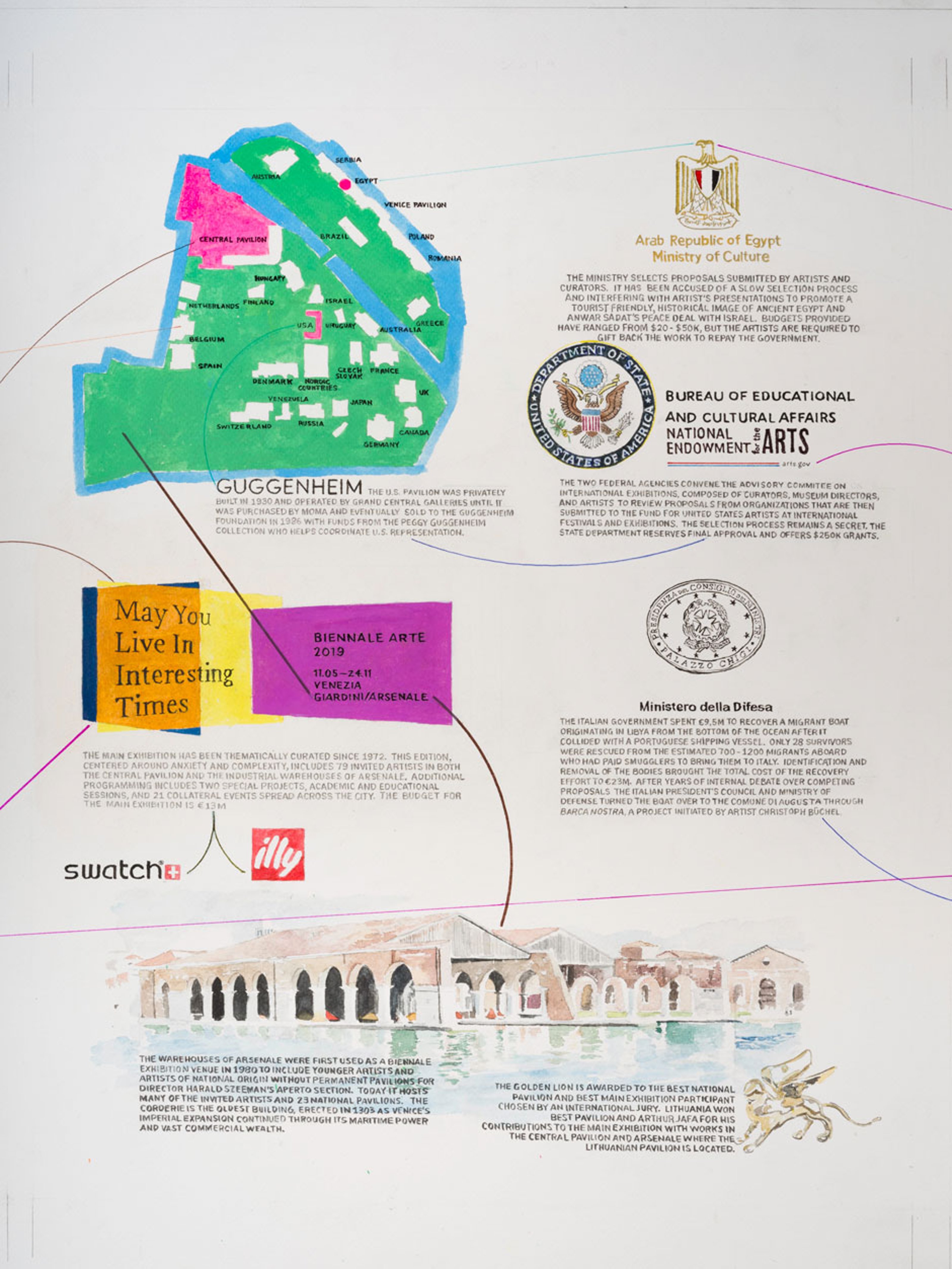
La Biennale di Venezia (Propaganda)
2019
detail
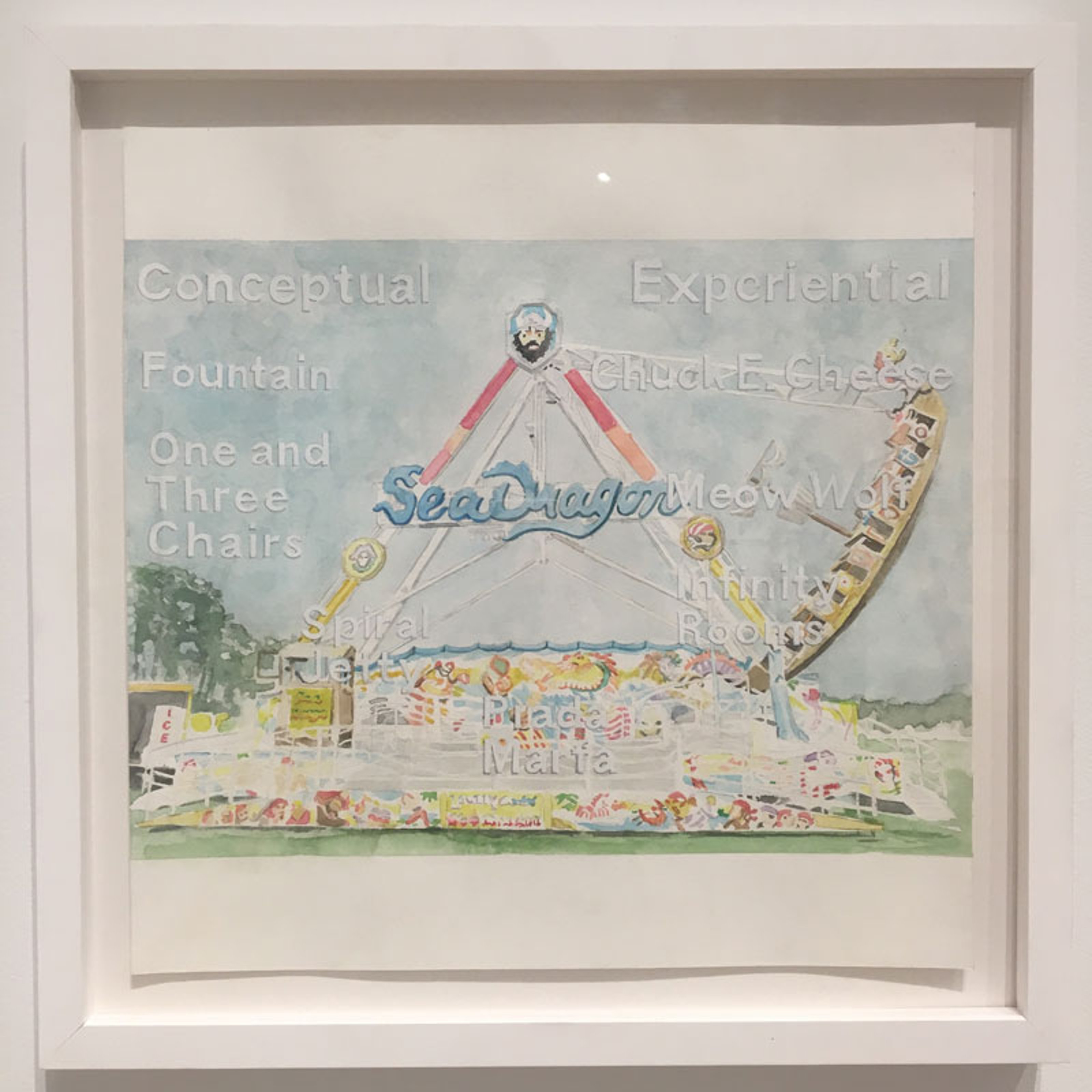
Sea Dragon (A County Fair)
2019
Watercolor and acrylic on paper
metadata: posted May 2nd, 2019. 142 likes
15 x 15 inches
At the risk of centering structural problems on himself the artist has long been engaged through satire, parody, and self-critique of the problem of his identity as an artist. A crucial aspect of this problem is best articulated by artist Xaviera Simmons, “Understand the historical American narrative and see yourselves within that framework; do the cultural autopsy, name what whiteness is and the centuries of harm it has done; show yourselves to each other and wrestle with the implications of whiteness on canvas, in performance, in front of the camera and definitely in writing; and, most importantly, stop oppressing us through dismissive and condescending words and deeds.”

Venice (Don’t Look Now)
diptych
2019
Watercolor and acrylic on paper
metadata: posted May 5th, 2019. 256 likes
15 x 15 inches (each)